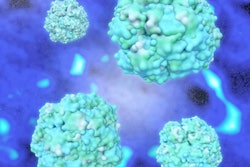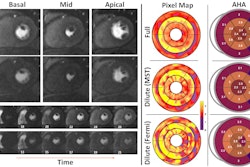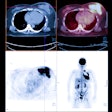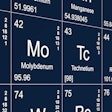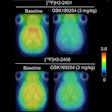A large prospective study has confirmed the long-term safety of radium-223 (Ra-223) for the treatment of metastatic castration-resistant prostate cancer (mCRPC).
Final analysis of the global REASSURE trial with seven-year follow-up found a very low rate of secondary primary malignancies or fractures in patients receiving Ra-223, according to a presentation at the 2025 American Society of Clinical Oncology (ASCO) meeting in Chicago.
"This real-world safety analysis of patients with mCRPC is the longest follow-up of a radiopharmaceutical reported to date and supports the well-established favorable safety profile of Ra-223,” wrote Alton Sartor, MD, of the Mayo Clinic and colleagues.
The REASSURE study prospectively tracked the long-term safety of the alpha-emitting radionuclide, which received U.S. Food and Drug Administration (FDA) approval in 2013 and is marketed by Bayer Healthcare under the brand name Xofigo.
In all, 1,472 patients from sites in the U.S., Europe, Israel, and Latin America were enrolled in a noninterventional study between 2014 and 2017. The study’s primary outcomes included the incidence of secondary primary malignancies, safety events within 30 days and within seven years, and bone marrow suppression management in patients who had received at least one dose of Ra-223.
The median follow-up was 17 months (range: 0.3 months to 95.4 months), and the median patient age was 73 years. Eighty percent of patients had an ECOG Patient Status Scale grade of 0 or 1.
The researchers noted that evaluable patients had a median alkaline phosphatase level of 133 U/L, a prostate-specific antigen level of 59 ng/ml, and lactate dehydrogenase level of 266 U/L. In addition, 81% of patients in the study had bone-only metastases at baseline; 19% of patients had metastases in the bone plus other sites -- mostly lymph nodes, according to the authors.
Of the patients in the study, 48% had received prior treatment with abiraterone, 39% received enzalutamide, 39% received docetaxel, and 9% had received cabazitaxel. They received a median of six doses of Ra-223, and 67% received 5 or more treatments.
The researchers found 25 secondary primary malignancies in 24 patients (2%). Of these patients, 16 (67%) had received prior radiotherapy and one had received concomitant radiotherapy.
Only 3% of patients overall experienced drug-related serious adverse events more than 30 days after receiving Ra-223. The researchers also identified fractures in 10% of patients; these fractures were detected in 7% of 605 patients who had received concomitant BHA use, compared with 12% without concomitant use of BHA.
In other results, there was no notable difference in the incidence of abnormal platelet counts during Ra-223 and up to 30 days after between patients who did or did not receive chemotherapy. The researchers also found similar results for abnormal neutrophil counts (5% for both groups).
Furthermore, bone marrow suppression treatments were more frequently observed in patients who had received prior taxanes (38%) than those who hadn’t (26%), according to the researchers. What’s more, life-prolonging therapies received after Ra-223 included docetaxel (18%), enzalutamide (15%), abiraterone (11%), and cabazitaxel (11%).
Median overall survival was 15.5 months, according to the researchers.





